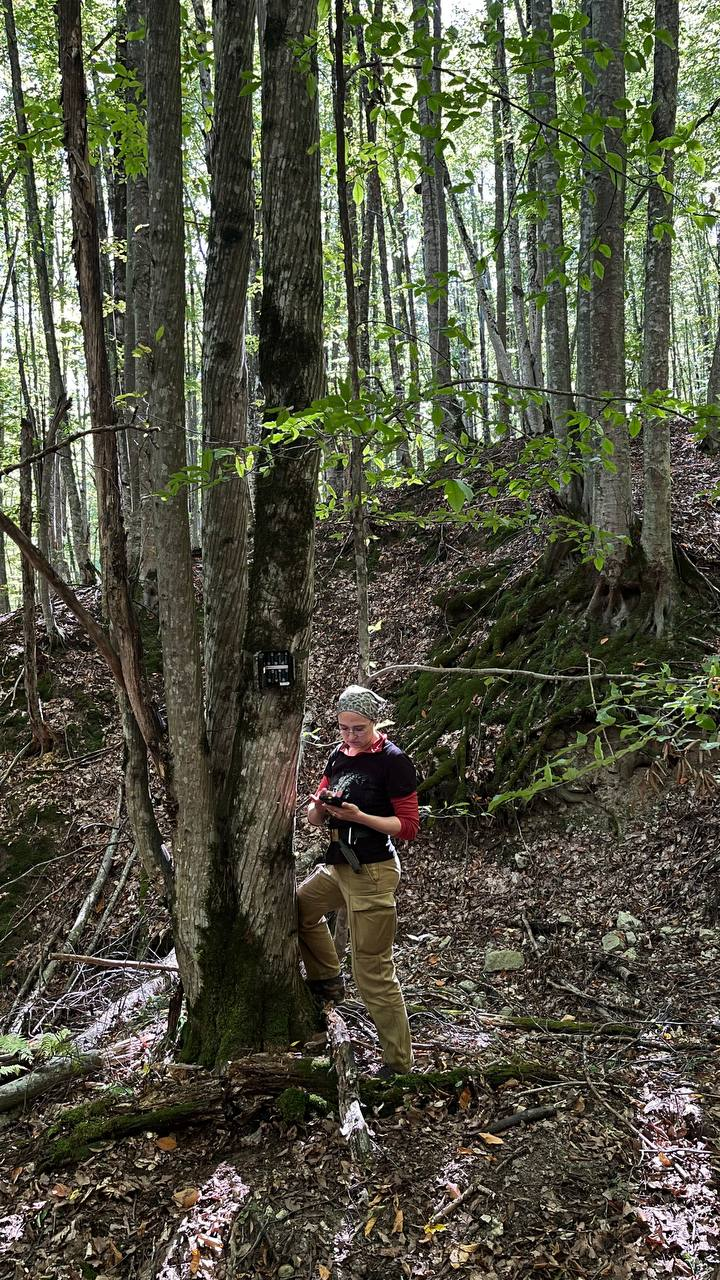
The mountainous part of the Chechen Republic is an amazing land of unique nature of the North Caucasus. Due to its inaccessibility, modern scientists know very little about the peculiarities of the functioning of local ecosystems. First of all, this concerns the state of mammal populations. This is why research using camera traps is especially relevant here.

From September 27 to October 7, field work was carried out to install the first matrix of camera traps in Chechnya. They were carried out as part of the Program for the Restoration of the Persian Leopard in the Russian Caucasus, the scientific support of which is provided by the A.N. Severtsov Institute of Ecology and Evolution of the Russian Academy of Sciences (IEE RAS). The rare large cat that once lived here was completely exterminated by humans in the middle of the last century, but at present there is hope for the restoration of the leopard within the remaining areas of its historical range. Since 2007, the Federal Project for the Restoration of the Leopard in the Caucasus has been implemented in the Russian Caucasus under the leadership of the Ministry of Natural Resources of Russia. The Central Caucasus was involved in the Project at the regional level in 2016. To date, eight leopards (four males and four females) specially trained for life in the wild have been released into the wild in the Republic of North Ossetia-Alania. One of the females released in 2022 in Ossetia was equipped with a special transmitter, with the help of which specialists established that she had mastered the territory of the Chechen Republic. That is why, since 2023, the Chechen Republic has been chosen by a scientific group working under the guidance of the IEE RAS for a more detailed survey in terms of restoring the population of the Central Asian leopard. As part of such a survey, it is necessary to conduct a thorough assessment of the potential suitability of the territory for the successful existence of the leopard. One of such studies is the study of the feeding capacity of habitats, i.e. the abundance of the main prey species (most often ungulates), as well as competitor species (other large predators). This information will help scientists understand how successfully the leopard can exist here in the future.

Camera traps are a great tool for such work.
In 2024, the first cluster of the Photo Monitoring Network under the CAMMON-CHECHNYA Program was installed, including 20 camera trap locations. All cameras are installed randomly within a regular grid with a density of 1 location per 2 sq. km. The network itself is located in the forest belt of the mountainous part of the Chechen Republic, and the camera traps are placed overlooking the main animal trails.

A well-coordinated team of zoologists and botanists from the Institute of Ecology and Evolution of the Russian Academy of Sciences, Lomonosov Moscow State University, Moscow Zoo, Timiryazev Moscow Agricultural Academy, Central Forest Reserve, as well as the Ministry of Natural Resources of the Republic of North Ossetia-Alania and local gamekeepers-guides successfully installed all the cameras and launched the Photo Monitoring Network.
It is worth noting that this work would not have been possible without the deep involvement and interest of Chechen specialists, who not only created an indescribable atmosphere and comfort, but also ensured the safety of the field group, because many areas are still dangerous to visit. Without knowledge of the mountains and the features of the location of animal trails, which local gamekeepers generously shared, it would have been extremely difficult to install camera traps here.
We are very glad that such a project has begun, and we are looking forward to the first results. The project is being implemented thanks to the support of the Nature and People Foundation.
Related materials:
ZapCamTrap: "The first camera traps project in Chechnya has started"
